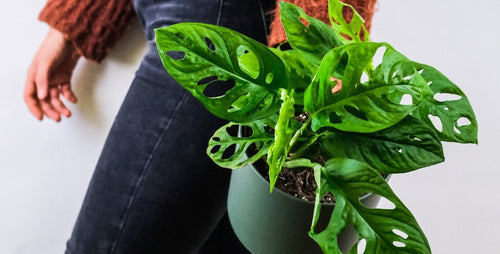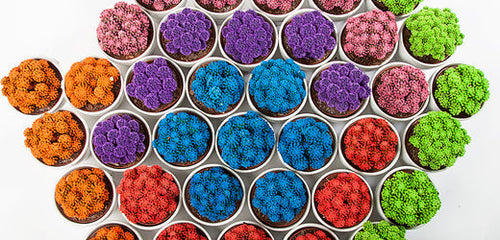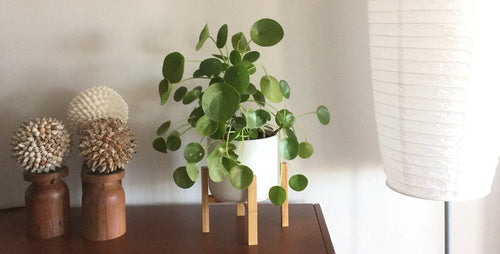 I’ve always been fascinated by little houseplants like pileas. These scrappy little plants thrive in terrariums, dish gardens, or in pots by themselves. Pileas come in a wide variety of shapes and colors that are truly surprising. In fact, you’d never guess that these very different looking plants are all close cousins.
I’ve always been fascinated by little houseplants like pileas. These scrappy little plants thrive in terrariums, dish gardens, or in pots by themselves. Pileas come in a wide variety of shapes and colors that are truly surprising. In fact, you’d never guess that these very different looking plants are all close cousins.
One of my all-time favorite pileas is Moon Valley, Pilea involucrata, at left. These little charmers, sport textured apple-green leaves flushed with red purple highlights. At a glance, they almost look like they’re made of felt. You might even be tempted to gently squeeze them to see if they’re real.
Then, there’s Aluminum plant, Pilea cadierei minima. It was one of the first plants I ever used in a terrarium. Super easy to grow, each leaf is elegantly marked with metallic-silver variegation that shimmers even in low light. Another, new favorite is 'Dark Mystery' pilea, at left. I’d never seen this variety until last spring when it appeared in a shipment of mixed plants from the Exotic Angel® Plants greenhouses. Each of its textured, chocolate-brown leaves has a broad silvery stripe running down the center. 'Dark Mystery' has a low, mounding habit, so it won’t outgrow small terrariums or dish gardens.
Another, new favorite is 'Dark Mystery' pilea, at left. I’d never seen this variety until last spring when it appeared in a shipment of mixed plants from the Exotic Angel® Plants greenhouses. Each of its textured, chocolate-brown leaves has a broad silvery stripe running down the center. 'Dark Mystery' has a low, mounding habit, so it won’t outgrow small terrariums or dish gardens.
And for a complete change of pace, check out artillery plant, Pilea microphylla. With its tiny bright green leaves and short, arching stems it could almost be mistaken for curly parsley. But instead of a tasty garnish, Artillery plant is a top pick for terrariums.
Although they look different, all pileas have similar needs. Place them in a spot that receives bright, indirect light and water whenever the soil surface begins to dry. They prefer humid conditions, but won’t thrive if the soil is constantly moist. Learn more about pilea care and see more pilea options!Written by Doug Jimerson

















